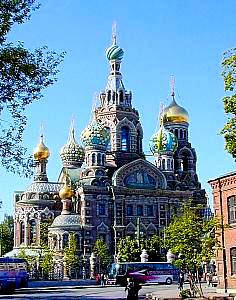And
here is the original Hermitage. It didn't have any stairs to
the
second floor so when Peter the Great wanted to be alone that is where
he would go. He kept his favorite paintings and sculpture
there. His servants would hoist him up in a special chair and
bring him meals.
Later there were other hermitages were built including his famous
museum in St. Petersburg and many others around the world including one
in Las Vegas and Andrew
Jackson's home in Tennessee.
